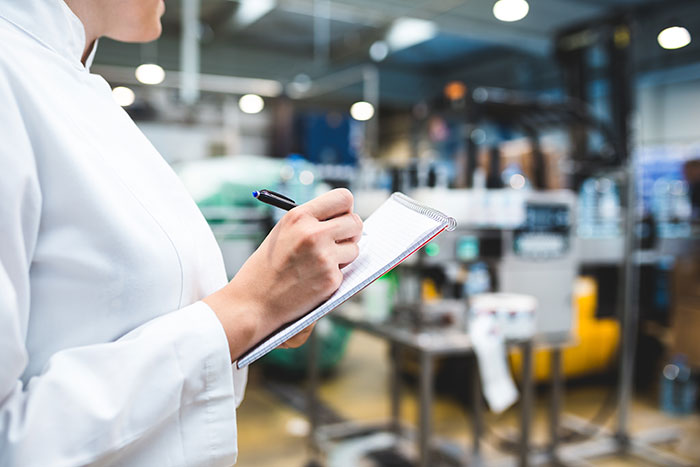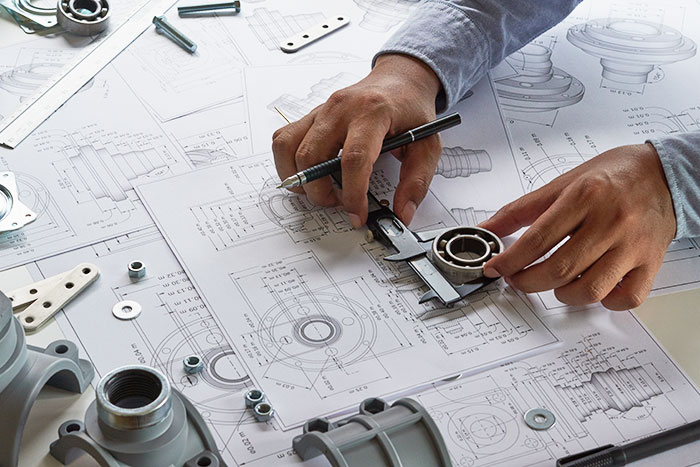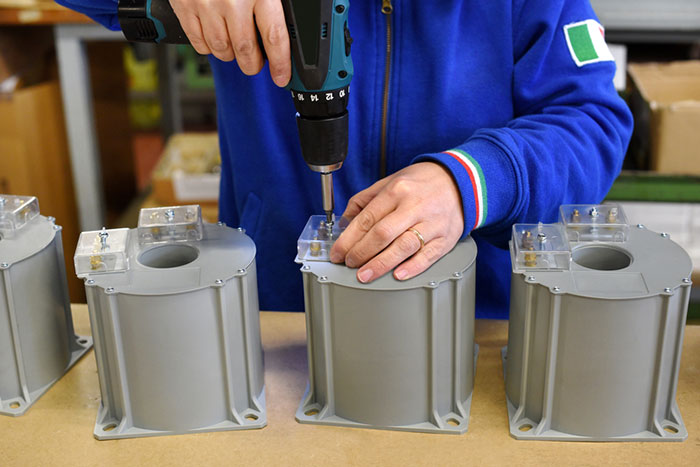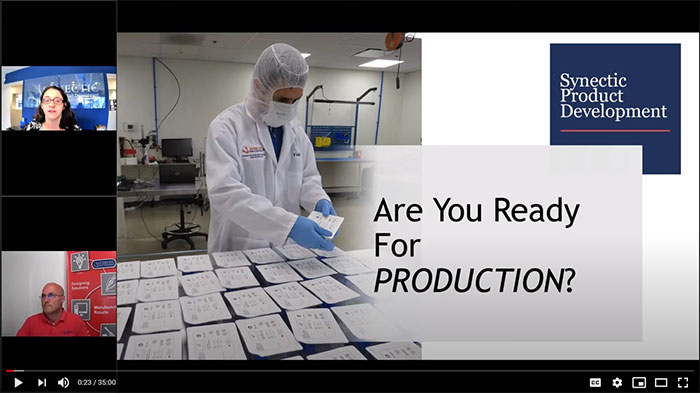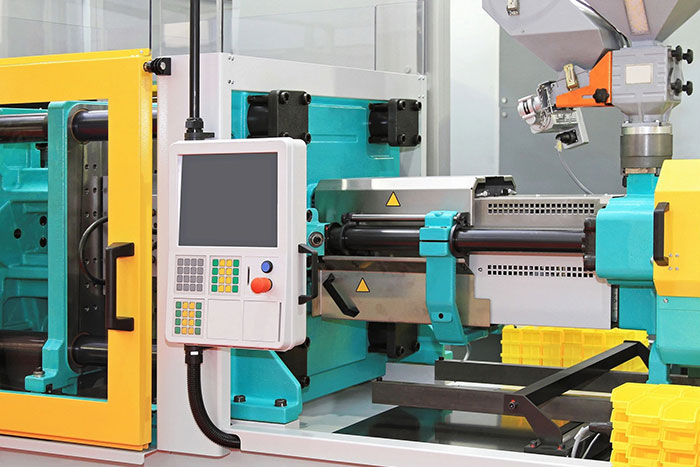
Everywhere you look, most plastic objects in the world around you are created using injection molding. Plastic injection molding has been a reliable, well-established manufacturing process for over 100 years. The first injection molded part was created back in 1872 by John W. Hyatt, and the industry has progressed substantially ever since. The design flexibility and cost-effectiveness it offers allow for many different use-cases across various industries. Before deciding whether this manufacturing process is right for your project, here are some things you should know.
1. What is plastic injection molding?
Plastic injection molding is a manufacturing process that produces parts by injecting molten plastic resin into a mold cavity. The speed and pressure with which the material injects into the mold can affect the desired shape.
2. How does plastic injection molding work?
Injection molding begins with fabricating a tool, also known as a mold, precision-machining it out of either steel or aluminum. A machine operator places the tool into the injection molding machine. The injection molding machine is fed thermoplastic resin pellets via a hopper. When the injection molding machine is activated, these thermoplastic pellets are pushed forward into the barrel of the machine by a screw and melted down until they liquefy. This liquid resin, known as a shot, is collected at the front end of the barrel in a chamber. Then, the machine injects the thermoplastic resin shot from the chamber into the tool cavity. The machine applies pressure until resin fills the tool. After cooling, the resin resolidifies, forming the part. Finally, the part ejects from the machine and moves on to the next step of production. This process is easily repeatable for production runs ranging from hundreds to millions of parts.
3. What are the benefits of plastic injection molding?
In most production runs the molding process produces parts typically in finished condition with the manufacturing process complete unless the part needs additional secondary processes, such as painting. Plastic injection molding is a huge cost-saving measure as multi-step manufacturing processes can be extremely pricey. The production cycle is relatively short, meaning that the parts have a quick turn-around time for moving on to the next steps. Since the molding process is repeatable thousands of times, plastic injection molding is one of the most cost-effective and efficient manufacturing choices for producing large part volumes.
4. How much does plastic injection molding cost?
Out of all the costs for injection molding, tooling makes up the majority. Tooling makes or breaks the plastic injection molding process because proper tooling is key to having a successful production run. Tooling pricing depends on part complexity, production cycle length, and thermoplastic resin material. Costs also depend on the type and amount of resin needed to create each part. The size of the part correlates directly to the size of the injection molding machines, which are rated by tonnage or the amount of force needed to hold the mold closed. Molding cycle time can increase depending on the complexity of the part. These factors all play a factor in the costs associated with the plastic injection molding process.
5. What are the types of plastic resin?
Injection molding utilizes a variety of thermoplastic resins tailored to the part’s required specifications. There are four categories and two subgroups of thermoplastic resin:
Commodity resins
Commodity resins are the cheapest plastics because they are easy to produce at high volumes. Common uses for commodity resins include disposable plastic products such as plastic cutlery.
Engineering resins
They cost more than commodity resins and offer better mechanical or thermal properties. Car bumpers are an example of a product made with engineering resins.
High-performance resins
These resins offer the strength of metal at the cost of plastic. High-performance resins are commonly found in car interiors.
Ultra resins
Ultra resins are the most expensive of the four and are suitable for extreme conditions, like high temperatures. Ultra resins are found in space and military applications.
Amorphous thermoplastics
These thermoplastics are usually clear, impact-resistant, and easily bondable with adhesives. They are, however, prone to stress cracking. Common amorphous thermoplastics are acrylic and ABS.
Semi-crystalline thermoplastics
Semi-crystalline thermoplastics are harder to thermoform due to their sharp melting point but have better structural strength than amorphous. Semi-crystalline plastics are used in bearings and heavy-wear applications.
6. What are the design considerations for injection molding?
When designing parts for plastic injection molding there are specific criteria to follow to produce optimal results. Wall thickness needs to account for material choice and part structure. Tapered sides, known as draft, are considered as well. Draft sides make the part easier to eject from the injection molding machine by allowing air into the mold.
Engineers review part radii and weigh the benefits of incorporating rounded corners, potentially making for a smoother molding process. Coring out is a cost-saving method where extra material within a part is cut or hollowed out of the design. The designer places ribs throughout the hollowed area to maintain part strength. Coring out also reduces sink and stresses during the injection molding process. Parts are evaluated for design for manufacturability (DFM) by injection molders before heading into the injection molding process. In some cases, engineers use a mold flow simulation to analyze and predict risks associated with the injection molding process. Simulations provide data allowing designers to adjust part tolerances quickly and precisely before tooling begins.
7. What are the techniques used in injection molding?
There are five different techniques used in plastic molding, each with its own advantage. The injection mold manufacturer will choose which technique best fits based on cost, function, or aesthetic needs.
- Inert gas or pelletized chemical blowing agent is mixed in with thermoplastic resin inside the barrel of the injection molding machine
- Decreases injection pressures compared to traditional injection molding
- Reduces the part weight by up to 15%
- Lower injection pressures allow for lower-cost aluminum tools instead of steel
- Inert gas or pelletized chemical blowing agent is mixed in with thermoplastic resin inside the barrel of the injection molding machine
- Decreases injection pressures compared to traditional injection molding
- Reduces the part weight by up to 15%
- Lower injection pressures allow for lower-cost aluminum tools instead of steel
- Introduces inert gas into the mold after the resin has filled the cavity and displaces resin creating a hollow part
- Ideal for creating large hollowed sections in thin-walled parts
- Injection pressure is reduced, creating less stress on the mold
- A one-step process that combines two parts into a single permanently joined and fully encapsulated part assembly
- Increases part strength and longevity
- Cost-saving because it involves fewer manufacturing steps
- Combines separate parts by molding one over the other in a two-step process
- Increases part strength and longevity
- Cost-saving because it involves fewer manufacturing steps
8. How do you make tools and molds for plastic injection molding?
Mold making, or tooling, requires significant capital investment because of its critical role in creating parts. Tool fabrication typically requires specialty tooling steels. However, aluminum tools can lower production costs, especially in the prototype stage but require specific molding techniques. More recently, toolmakers are using inexpensive 3D printed molds for very early prototypes and low-pressure molding.
Before fabricating molds, the parts need to be finalized completely, with the design frozen because any tooling changes are very costly. Molders and tool builders must work closely to ensure that the tool design meets the part requirements. Every mold must include callouts for parting lines, gates, and ejector marks. Parting lines are the line of separation on the part between the two mold halves. Gates are channels in the mold where the molten thermoplastic enters the mold cavity. Ejector marks are the spots where the injection molding machine’s ejector pins will push the finished part out of the mold.
9. What are the finishing processes for injection molded parts?
If you plan on utilizing plastic injection molding, keep in mind there are specific design feature requirements. We recommend partnering with a product development company intimately familiar with the plastic injection molding process that will initially incorporate that knowledge into designing your product. If you are unsure how to get started or would like some expert advice on plastic injection molding, contact us and we would be happy to help.
Need Plastic Injection Molding?
About Synectic Product Development: Synectic Product Development is an ISO 13485 certified, full-scale product development company. Vertically integrated within the Mack Group, our capabilities allow us to take your design from concept to production. With over 40 years of experience in design, development, and manufacturing, we strive for ingenuity, cost-effectiveness, and aesthetics in our designs. Learn more about our contract manufacturing services and see how we can help your next project.
